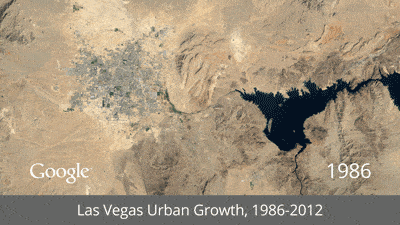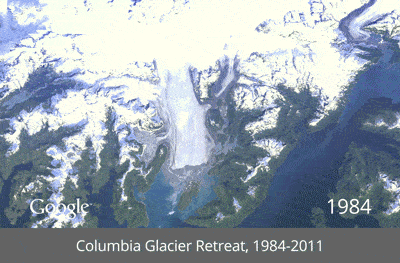Google is notorious for its ambitious projects, and its latest one falls nothing short. Capitalizing on its extremely powerful Google Earth engine, the company teamed up together with the US Geological Survey (USGS) and Time Magazine to release Timelapse – a visual representation of how the Earth has changed during the past 28 years.
Carefully stacked over each other, sequences of satellite images collected by NASA as part of the Landsat program offer a dramatic view of our planet has changed in a mere couple of decades, be it the rapid urban development in Las Vegas (coupled with a corresponding dried up lake) or Dubai, which in this short time span has gone from barren desert into a glittering palm-shaped metropolis; the frightening shrinking of Alaska’s Columbia Glacier; the vanishing of the Aral Sea due to the diversion of its sources; Alberta’s northeastern forests turned into a massive oil field; Amazon’s rainforest deforestation and so on.
In total, currently there are only eight image sets available, but more will soon follow. This is because compiled them was no easy task. Engineers had to sifted through 900TB of data or two million images, selecting only the best possible images – high resolution, no clouds and good lighting conditions.
You can find these Timelapse page set up on the Time website.




